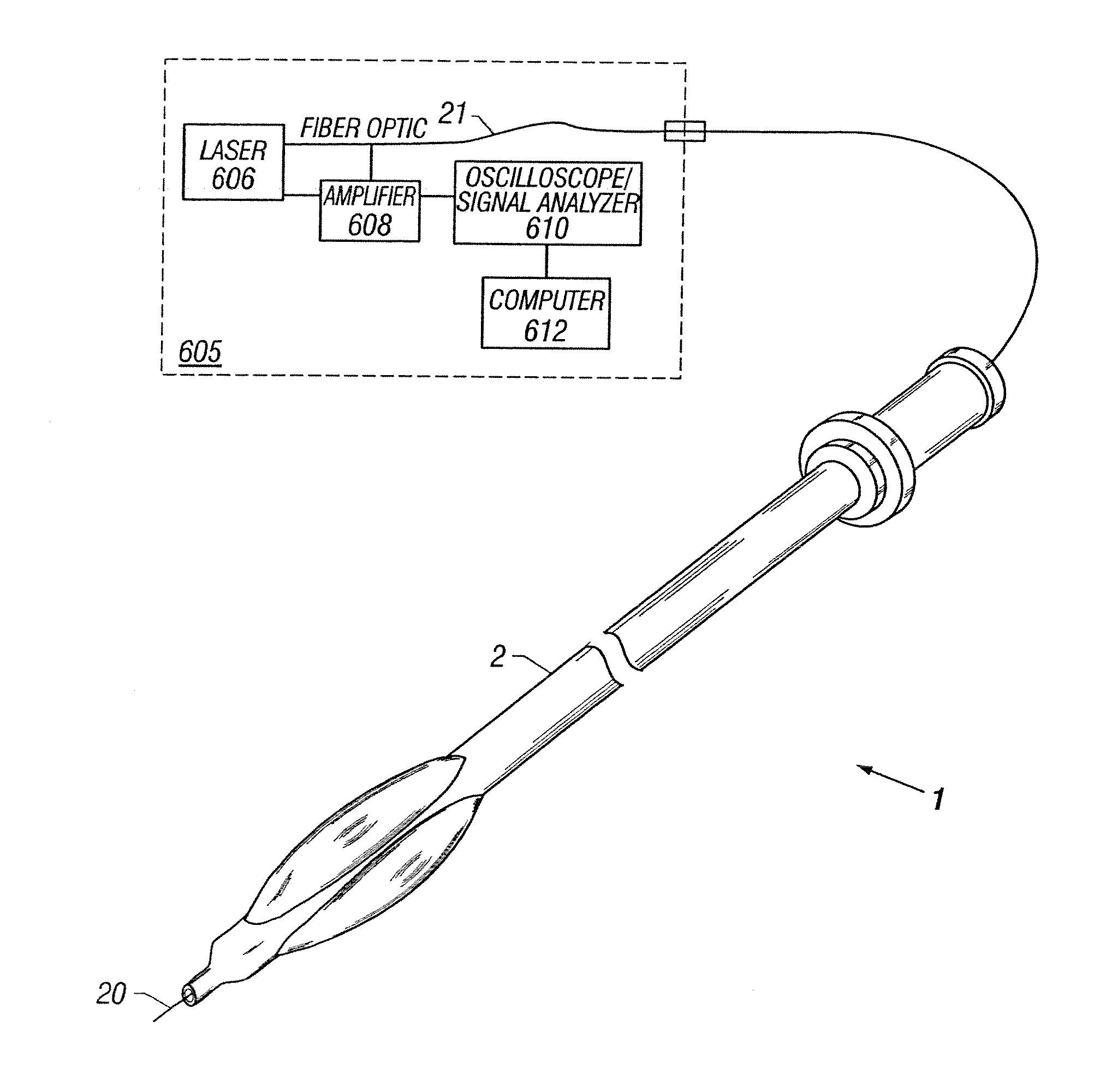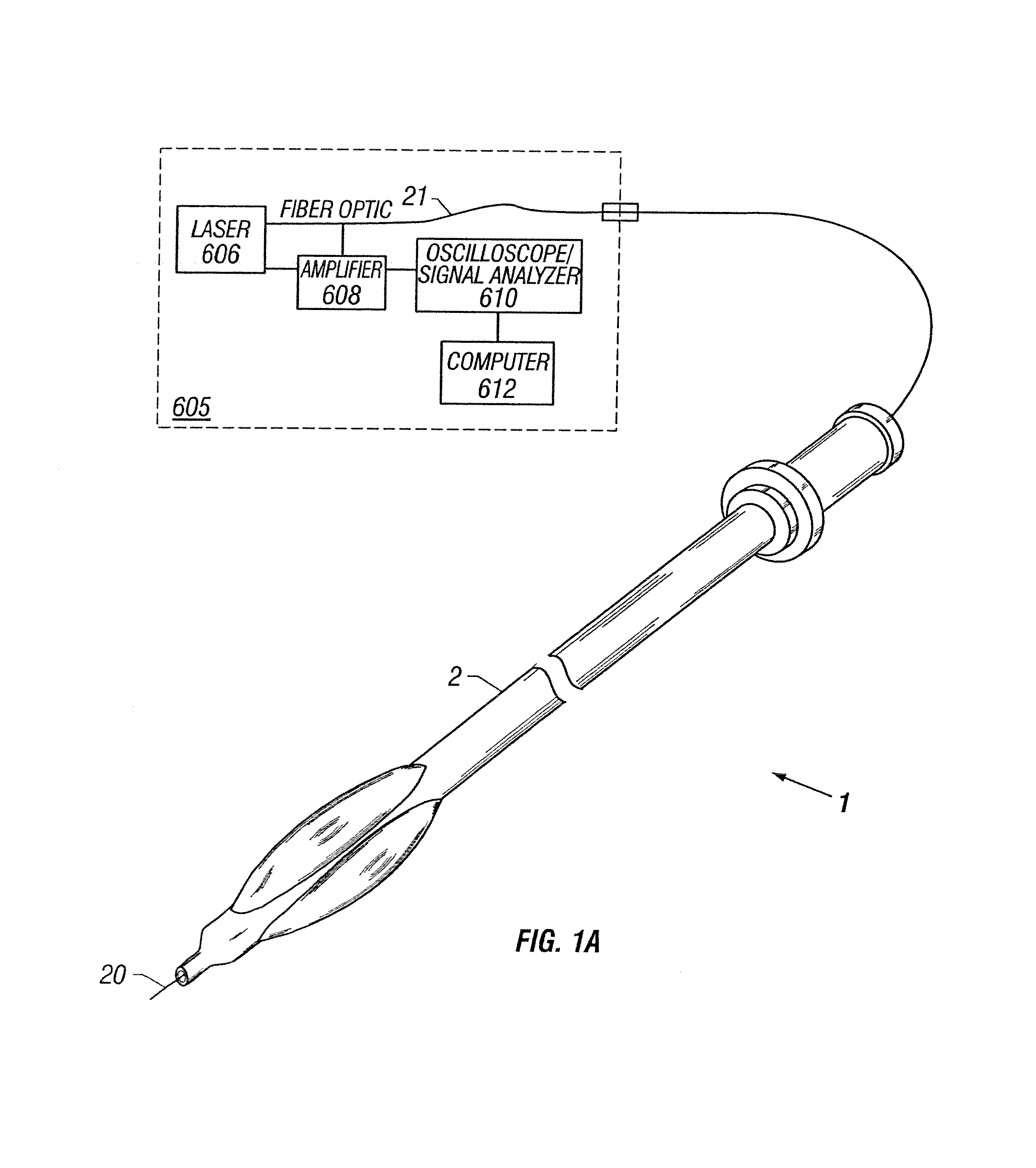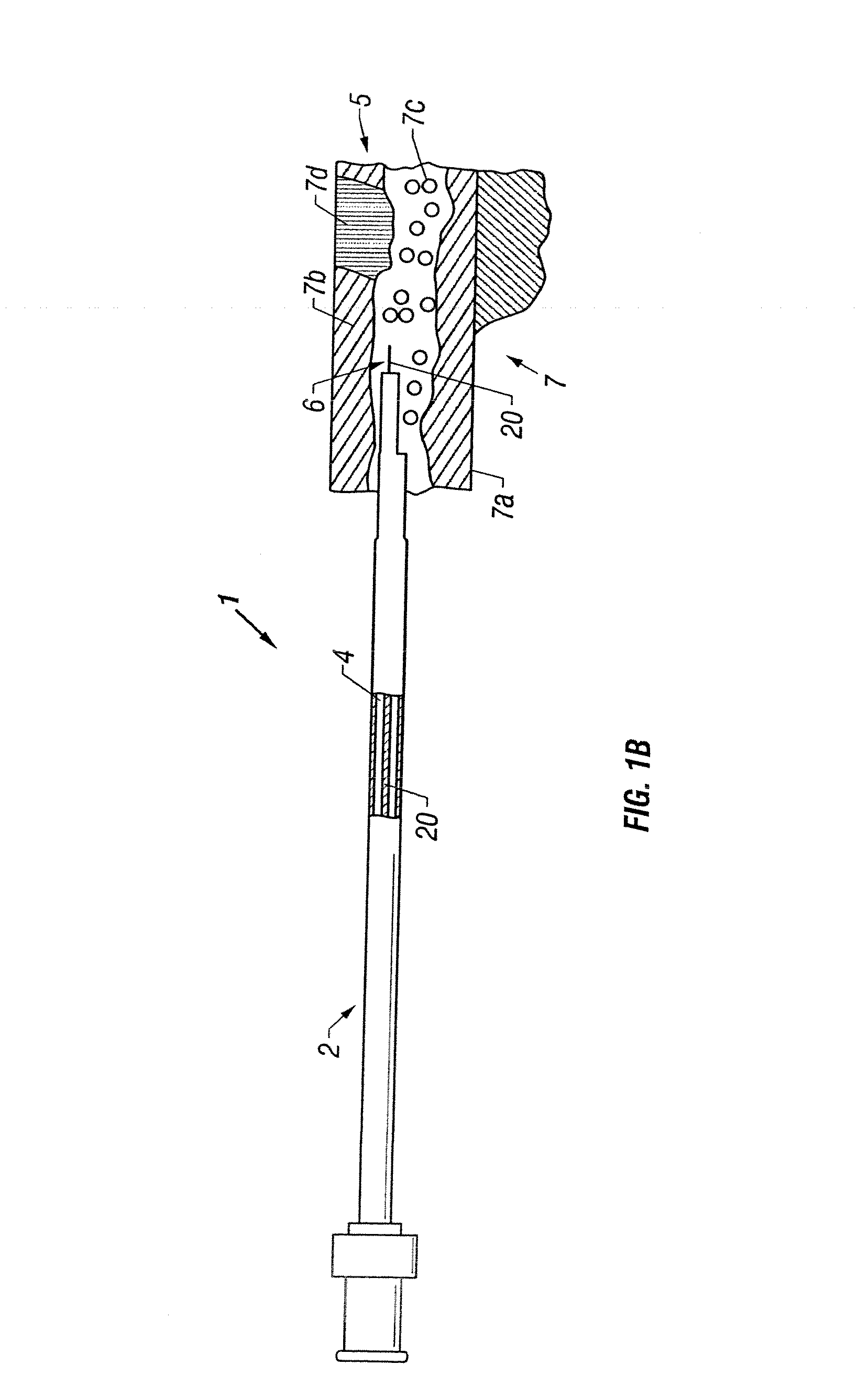Catheter with optical fiber sensor
a catheter and optical fiber technology, applied in the field of catheters with optical fiber sensors, can solve the problems of increasing the risk of heart attack or stroke, the vast majority of these therapeutic devices are being used with very little information about in vivo, and the “lesion specific” treatment, as well as preventive measures, cannot be adequately envisioned or planned
- Summary
- Abstract
- Description
- Claims
- Application Information
AI Technical Summary
Benefits of technology
Problems solved by technology
Method used
Image
Examples
second embodiment
[0068]With reference to FIGS. 10 and 12, in a second embodiment, the optical fiber 20 may be inserted into the sheath 58 through a small lumen 53a in a dual lumen extrusion. Lumen 53a may have an interior diameter in the range of approximately 0.005-0.01 in. In one embodiment, lumen 53a has an inner diameter of approximately 0.007 in.
[0069]The second lumen 53b of the sheath 58 would allow catheter to be advanced and / or retracted within sheath 58. Lumen 53b may have an interior diameter in the range of approximately 0.050-0.10 in. In one embodiment, lumen 53b has an inner diameter of approximately 0.060 in.
[0070]In one embodiment of the configuration presented in FIG. 12, the optical fiber 20 may be partially or completely coupled within the optical fiber lumen 53a. In another embodiment, the optical fiber 20 may be freely movable to advance and / or rotate within the lumen 53a. Similar to the above-described design, sheath 58 may be independently advanced over the catheter for optical...
first embodiment
[0075]With reference to FIG. 14, in a first embodiment, the optical fiber 20 is molded (and thus affixed or secured) onto the inner surface 451 of the balloon tubing distal section as the tubing expands to form balloon 450. The optical fiber 20 may also be molded (and thus secured) onto the outer surface 452 of the balloon tubing distal section during the balloon blowing process. Alternatively, the optical fiber(s) 20 may be bonded (or secured) to the inner or outer surfaces 451, 452 of balloon 450 following the balloon blowing process. As stated above, some portion or the entire remaining length of optical fiber filament 20 may be positioned within the catheter shaft 410, e.g., inner member 420 and / or outer member 430.
[0076]With reference to FIG. 15, in a second arrangement, the optical fiber 20 is positioned between two layers 450a, 450b of balloon tubing. During the balloon blowing process, the optical fiber 20 is molded (and thus affixed) onto at least one of the two layers 450a...
PUM
 Login to View More
Login to View More Abstract
Description
Claims
Application Information
 Login to View More
Login to View More - R&D
- Intellectual Property
- Life Sciences
- Materials
- Tech Scout
- Unparalleled Data Quality
- Higher Quality Content
- 60% Fewer Hallucinations
Browse by: Latest US Patents, China's latest patents, Technical Efficacy Thesaurus, Application Domain, Technology Topic, Popular Technical Reports.
© 2025 PatSnap. All rights reserved.Legal|Privacy policy|Modern Slavery Act Transparency Statement|Sitemap|About US| Contact US: help@patsnap.com



